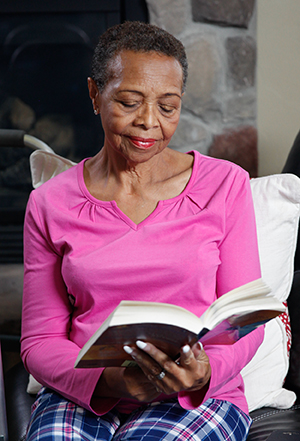A
B
C
D
E
F
G
H
I
J
K
L
M
N
O
P
Q
R
S
T
U
V
W
X
Y
Z
Click a letter to see a list of medical procedures beginning with that letter.
Click 'Back to Intro' to return to the beginning of this section.
After Carotid Artery Surgery: At Home
You’ll start feeling back to normal a day or two after getting home. But don’t forget that you just had surgery. You need to take it easy, even if you feel fine. Follow any instructions your healthcare provider gives you. In most cases, stitches dissolve on their own.

Speeding your recovery
These tips can help speed your recovery:
-
Spend your first few days relaxing at home. You can read, watch TV, or do other quiet, restful activities.
-
Don’t do strenuous activities until your healthcare provider says it’s OK (often 1 to 4 weeks).
-
Take medicine as instructed, often aspirin or clopidogrel.
-
Don’t drive until your healthcare provider says it’s OK. This will most likely take 1 to 4 weeks.
-
Once your provider says you can shower again, it’s OK to get the area of your incision wet. But don’t scrub it.
-
If you shave, be careful around the wound. You may want to use an electric razor.
When to call 911
A stroke is a medical emergency. Call 911 right away if you have any of these symptoms of stroke:
-
Weakness, tingling, or loss of feeling on one side of your face or body
-
Sudden double vision or trouble seeing in one or both eyes
-
Sudden trouble talking or slurred speech
-
Sudden, severe headache
B.E. F.A.S.T. is an easy way to remember the signs of a stroke. When you see these signs, you'll know that you need to call 911 fast. B.E. F.A.S.T. stands for:
-
B is for balance. Sudden loss of balance or coordination.
-
E is for eyes. Vision changes in one or both eyes.
-
F is for face drooping. One side of the face is drooping or numb. When the person smiles, the smile is uneven.
-
A is for arm weakness. One arm is weak or numb. When the person lifts both arms at the same time, one arm may drift downward.
-
S is for speech difficulty. You may notice slurred speech or trouble speaking. The person can't repeat a simple sentence correctly when asked.
-
T is for time to call 911. If someone shows any of these symptoms, even if they go away, call 911 right away. Make note of the time the symptoms first appeared.
When to call your healthcare provider
Contact your healthcare provider right away if you have any of these:
-
Swollen neck
-
Redness or fluid coming from the wound
-
Your face, an arm. or a leg becomes numb or weak
-
Sudden changes in vision or loss of vision in one eye
-
Trouble speaking, swallowing, or breathing
-
Fever of 100.4°F (38°C) or higher, or as directed by your provider
-
Severe headache or eye pain on the same side of the body you had surgery on
If your healthcare provider’s office is closed, go to the hospital emergency room.
Online Medical Reviewer:
Anne Fetterman RN BSN
Online Medical Reviewer:
Deepak Sudheendra MD
Online Medical Reviewer:
Raymond Kent Turley BSN MSN RN
Date Last Reviewed:
8/1/2022
© 2000-2025 The StayWell Company, LLC. All rights reserved. This information is not intended as a substitute for professional medical care. Always follow your healthcare professional's instructions.